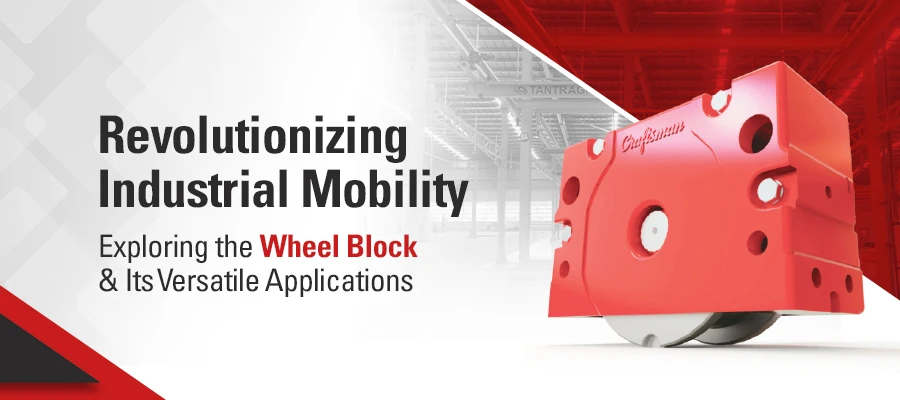Revolutionizing Industrial Mobility: Exploring the Wheel Block and Its Versatile Applications

- 06 Mar 2024
- By Admin
In the realm of industrial engineering and transportation, innovation continually shapes the landscape of efficiency and safety. Among the numerous advancements, one standout solution that has transformed the way heavy machinery moves is the wheel block. This compact yet powerful device has become an indispensable component in various industries, offering unparalleled mobility and functionality. Let's delve into what a wheel block is and explore its diverse range of applications.
At its core, a wheel block is a compact unit equipped with wheels, typically mounted on a sturdy frame. These wheels are engineered to support heavy loads and provide smooth movement across various surfaces. Unlike traditional wheels or casters, wheel blocks offer enhanced stability, precision, and control, making them ideal for demanding industrial environments.
Applications of Wheel Blocks
1. Overhead Cranes
In the realm of material handling and manufacturing, overhead cranes play a vital role in lifting and transporting heavy loads. Wheel blocks serve as the primary means of mobility for these cranes, allowing them to traverse along rails with utmost precision and efficiency. Whether in automotive plants, steel mills, or shipyards, wheel blocks ensure seamless movement of goods, facilitating streamlined operations.
2. Gantry Systems
Gantry systems, commonly used in construction, logistics, and warehousing, rely on wheel blocks for mobility. These systems feature sturdy frameworks with overhead beams, supported by wheel blocks that enable horizontal movement along tracks or rails. Whether used for lifting construction materials on job sites or organizing inventory in warehouses, gantry systems equipped with wheel blocks offer unmatched versatility and maneuverability.
3. Conveyor Systems
In manufacturing and distribution facilities, conveyor systems play a crucial role in automating material handling processes. Wheel blocks are integral components of conveyor systems, supporting the movement of conveyor belts along their designated paths. This ensures the smooth and efficient transfer of goods from one location to another, optimizing production and minimizing downtime.
4. Heavy Machinery
Various types of heavy machinery, such as trolleys, carts, and transporters, rely on wheel blocks for mobility. These components provide stability and control, allowing heavy machinery to navigate complex environments with ease. Whether transporting materials in mining operations or facilitating assembly processes in manufacturing plants, wheel blocks contribute to enhanced efficiency and safety.
Benefits of Wheel Blocks
1. Enhanced Mobility: Wheel blocks offer superior mobility, allowing heavy machinery to traverse across different surfaces with ease.
2. Precision and Control: With precise steering and control mechanisms, wheel blocks enable operators to maneuver heavy loads with accuracy, minimizing the risk of accidents or damage.
3. Durability and Reliability: Engineered to withstand heavy loads and harsh environments, wheel blocks are built for long-term durability and reliability, ensuring uninterrupted operations.
4. Versatility: From overhead cranes to conveyor systems, wheel blocks find applications across a wide range of industries, showcasing their versatility and adaptability.
Conclusion
In conclusion, the wheel block stands as a testament to the power of innovation in industrial engineering. Its ability to facilitate seamless mobility, enhance efficiency, and ensure safety has made it an indispensable component in various industries. As technology continues to evolve, the wheel block remains a cornerstone of modern industrial mobility, driving progress and efficiency in the ever-changing landscape of manufacturing and logistics.
